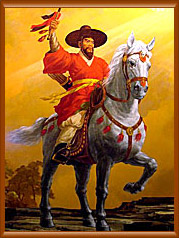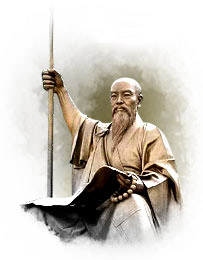WarUprising and Activities of voluntary military force
The voluntary military force was not a soldier drafted by government or authority but was a group of civilians voluntarily formed to fight for the country. With the incapability of government force, the nation was humiliated by the Japanese invader and many innocent people killed, voluntary military forces rose to the occasion to save the people and keep themselves from the salvage.
 Gwak Jae-woo
Gwak Jae-woo
The ideals to form the basis of the voluntary military force was the thorough national resistance perception that it was epitomized in voluntary military force. In addition, the spirit of serving the kingship as an ethical teaching of Confucius and it was one of the motivations of having the voluntary military force uprising.
In January 1593 (the 26th year of King Seonjo), the number of voluntary military force from all around the country was 27,000, about 1/4 of entire military forces of Joseon, and it was less than the number of Imjin Year when the activities of voluntary military force were most active. In 1593, when the Joseon forces was recovered gradually, it was the center of the war with less needs of voluntary military force and many voluntary military forces were merged into the regular military force. For representative leaders of the voluntary military force, there were, Gwak Jae-woo, Ko Gyeongmyeong, Cho Heon, Kim Cheon-il and others.
Thereafter, the senior monk of Myohyangsan, Hyujeong (Seosan Dasa) instigated the voluntary Buddhist military force with several thousands of Buddhist followers and sent the notice to many temples. Therefore, in addition to Younggyu, Cheoyoung of Honam, Yujeong of Gwandong, Uieom of Haseo and other pupils of Hyujeong brought the voluntary Buddhist military force to uprise.
 Yujeong
Yujeong
In addition, there was substantial number of voluntary Buddhist military force from the temples around the nation with their significant accomplishment in various battles. The period of most activities for voluntary Buddhist military force was from June 1592 to April 1593 when the capital was recovered. During the period the battles where the voluntary Buddhist military force had great contributions in the battles in Cheongju Fortress, Pyeongyang Fortress, Haengju Fortress and others.